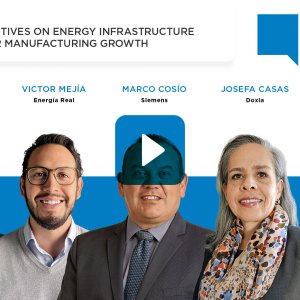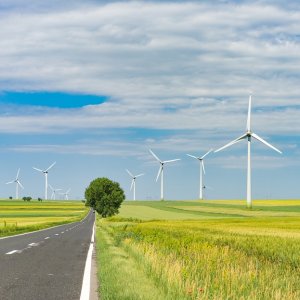The Greenest Energy Is Also Good For Your Bottom Line

STORY INLINE POST
We are living in times of change and disruption where sustainability has become a crucial issue for society. Our development as a society and as individuals is only possible if it is sustainable. Therefore, this issue has become essential for companies not only because of its impact on the planet but also because of the benefits that adopting sustainable practices can bring to their bottom line. In particular, the use of green energy has become increasingly important for protecting the planet and it is a main point in society's perception of moving toward a better future. However, I believe it is important to highlight that the most sustainable or greenest energy is that which is not consumed.
Many companies are facing the challenge of transforming themselves into more environmentally sustainable companies. However, many others simply do not consider it possible because they believe that energy generation or consumption is not within their operational metrics as they are not electricity-intensive. Investing in the effort or resources to adopt measures that do not initially have a significant impact on their bottom line does not seem to be of interest to these types of companies.
What Is Not Measured Cannot Be Controlled
The first step toward a more sustainable environment is to understand our consumption profile, which is not just about knowing how much energy we consume and its cost, but also about how we are consuming it and if we are doing it efficiently.
We are fully immersed in a digital world, and the IoT is increasingly penetrating our lives. We must be able to take advantage of technology to improve our environment while obtaining economic returns on the improvements that are implemented. Therefore, it is essential to undergo a process of sensorization of our environment and data analysis to understand the parameters in which our daily or professional activity takes place.
Case Study: Ventilation in Infrastructures
For instance, almost all human activities involve the use of air conditioning for their development. Many would be surprised by the digitized analysis of the consumption parameters associated with air conditioning and the inefficiency of its use as we are used to it. The human operator is not able to control in real-time all the factors that imply better environmental quality, personal thermal comfort, and a reduction in energy consumption through the optimization of the system's use. However, artificial intelligence is capable of performing all the necessary mathematical analyses in real time, and simultaneously improving air quality, comfort, and energy consumption.
For example, an artificial intelligence-based operator is capable of improving thermal comfort, air quality, and energy efficiency in indoor spaces. Based on dynamic algorithms, it seeks a balance between complex variables, such as temperature, humidity, air quality, occupancy, and electrical consumption, to predict the environmental conditions inside the rooms and offer greater comfort to the infrastructure's users while optimizing energy consumption. Also, from the definition of several operating criteria and real-time variable reading, the algorithm applies a centralized operating mode, establishing an optimal operational strategy for each moment in time.
The Metro of Barcelona company trusted the “Respira” system for the intelligent regulation of the ventilation of the metro network to improve environmental quality, hygiene, and passenger comfort within stations, and at the same time, to reduce energy consumption aligned with its sustainability objectives.
In conventional underground transport stations and networks, there are no machines to produce cold or heat, therefore the only way to control temperature and other environmental conditions is by introducing external air supplies at certain points and air outlets at others. In addition, the entire network of tunnels is connected, making it very difficult to isolate the thermal behavior of each station, thus it would be difficult to optimize the operation of the ventilation system through operators. Consequently, the sensitization of systems, along with real-time data digitization and analysis, allows for efficient operation.
Hence, improving the field of sustainability is possible as long as we can measure and understand the energy environment in which we operate.
Efficiency Sells — and Improves the Bottom Line
Companies must be very aware that the path to sustainability is always a positive one. Adopting sustainable practices helps companies improve their reputation and increase customer and employee loyalty. Consumers and employees are increasingly concerned about the environmental impact of companies, and prefer to do business with and work for companies that take these issues into account.
Contrary to popular belief, this path is not a costly one. Adopting these efficiency systems involves a reduction in consumption, which makes their implementation pay for itself. For example, the Barcelona City Metro, with the implementation of the intelligent system, yearly saves €1.7 million (US$1.8 million) on its electricity bill, and offers much better air quality and passenger comfort. Additionally, this system can be marketed as a company effort to meet society‘s sustainability goals. In short, there is always a way to find financing that makes being more sustainable more profitable and does not require a financial outlay.
In summary, the greenest energy is the energy that is not consumed, and companies can obtain significant savings by reducing their energy consumption and adopting sustainable practices. In addition to the economic benefits, adopting sustainable practices can help companies improve their reputation and increase customer and employee loyalty. Finally, by taking measures to reduce energy consumption, companies can improve their sustainability and help protect the environment for future generations.
























